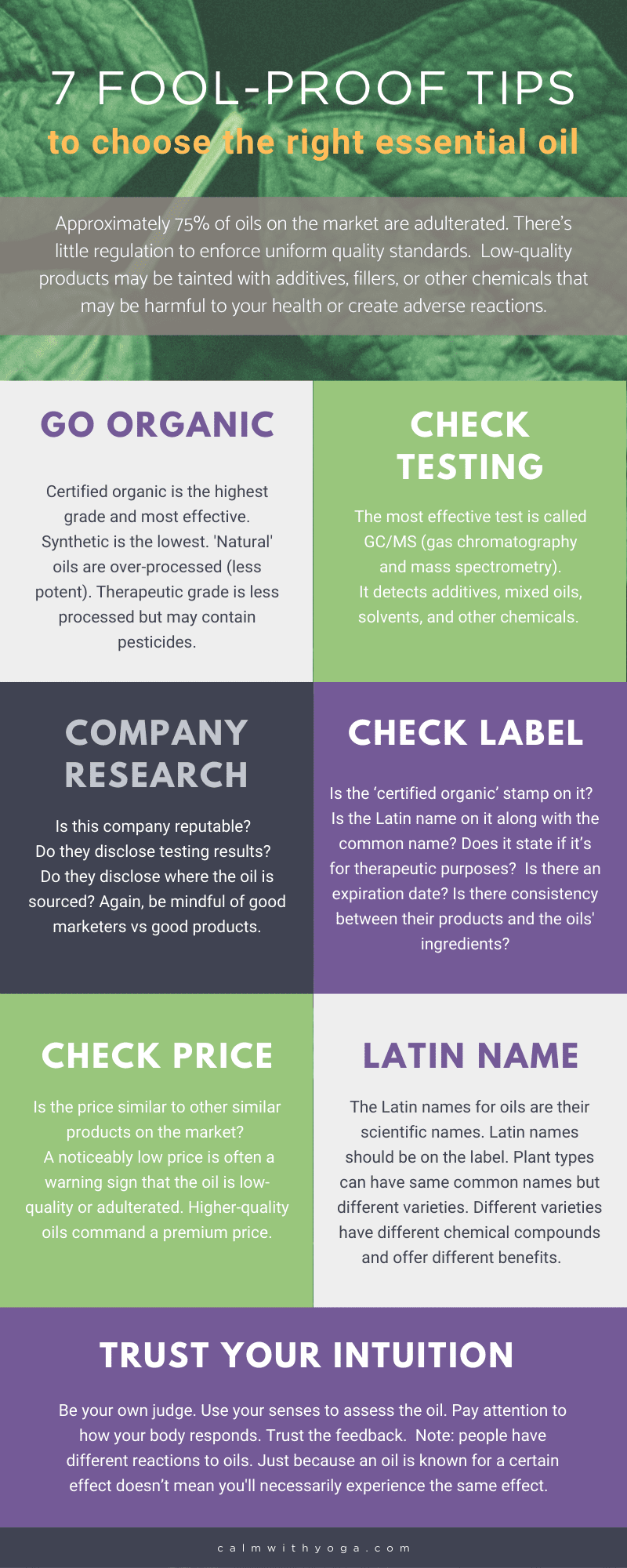Why People Are Turning To Essential Oils To Relieve The Signs & Symptoms Of Arthritis
Arthritis refers to an inflammatory response of the various joints in the body causing swelling, chronic pain, stiffness, and reduced range of motion.
Not properly managing inflammation and arthritis pain can result in a reduced quality of life and mental, emotional, and physical well-being.
There are different types of arthritis such as osteoarthritis and rheumatoid arthritis.
Rheumatoid arthritis is an autoimmune disease that results in the body attacking its own joint tissues.
Because arthritis is typically a chronic condition many people also turn to natural and home remedies to manage symptoms and improve long-term quality of life.
The use of essential oils may be an effective addition to your arthritis care regimen.
Essential oils (EOs) are highly concentrated plant compounds extracted from different parts of trees, plants, flowers, nuts, seeds, and even fruit.
The therapeutic application of these oils is called aromatherapy and has been shown to offer many health benefits and can help aid a wide variety of ailments, symptoms, and conditions such as:
- Pain relief
- Muscle pain relief
- Compromised immunity
- Headaches
- Allergies
- Colds, sinus, and coughs
- Stress and anxiety
- Insomnia
According to Mary Margaret Chappell and Jennifer Davis from the Arthritis Foundation:
“Research corroborates the use of aromatherapy for pain relief.
In fact, a study from the Catholic University of Korea in Seoul showed that people with arthritis who sniffed a fragrant blend that included lavender, eucalyptus, and rosemary experienced less pain and better moods than those who didn’t.”
How EOs Work To Soothe Arthritis Symptoms
EOs contain hundreds of active compounds that impact the body’s function and processes by interacting with our nervous system, hormones, and organs.
The oils enter the body and bloodstream via the skin if we apply them topically or via the lungs if we inhale them.
Topical application is considered the most effective way to help soothe arthritis.
The most common symptoms of arthritis are stiffness and joint pain caused by joint inflammation.
If you have rheumatoid arthritis then your immune system is on overdrive too.
You’ll want to look for EOs that are abundant in both analgesic properties (pain-relief) and also anti-inflammatory properties.
It’s important to note though, that though EOs can help manage RA symptoms they are not a cure for arthritis.
The 6 Best Essential Oils For Arthritis Relief
Turmeric oil (Curcuma longa)
- Analgesic
- Anti-inflammatory
- Antioxidant
- Anti-rheumatic
According to a growing amount of research, turmeric essential oil boasts potent anti-inflammatory effects thanks to its main active ingredient called curcumin.
A 2016 systematic review of various randomized clinical trials published in the Journal of Medicinal Food found that overall 1,000mg/day of curcumin extract appears to help alleviate arthritis symptoms though more research is needed. (1)
Frankincense oil (Boswellia carterii)
- Analgesic
- Anti-inflammatory
- Antioxidant
- Antispasmodic
Thanks to Frankincense’s potent anti-inflammatory properties, the Arthritis Foundation suggests supplementing with Frankincense essential oilto treat inflammation pain symptoms. (2)
Ginger oil (Zingiber officinale)
- Analgesic
- Anti-inflammatory
- Antioxidant
- Antispasmodic
Ginger oil is well-known for fighting inflammation-induced pain.
A 2016 animal study found lowered rheumatoid arthritis-related inflammation rates in female rats after exposure to ginger essential oil. (3)
Another study published in Arthritis & Rheumatism found that ginger extract had a significant effect on reducing symptoms of osteoarthritis of the knee. (4)
Lavender oil (Lavandula angustifolia)
- Analgesic
- Anti-inflammatory
- Antispasmodic
A 2016 randomized controlled trial on the effects of aromatherapy massage using a mixture containing lavender essential oil on rheumatoid arthritis patients found that:
“Aromatherapy massage and reflexology are simple and effective nonpharmacologic nursing interventions that can be used to help manage pain and fatigue in patients with rheumatoid arthritis.” (5)
Eucalyptus oil (Eucalyptus globulus)
- Analgesic
- Anti-inflammatory
- Antispasmodic
Eucalyptus essential oil is rich in 1.8 cineole, an active compound known to help relieve pain and fight inflammation. (6)
A 2013 randomized clinical trial on knee replacement surgery patients described that inhaling eucalyptus every 30 minutes resulted in a resulted in perceived pain reduction and decreased blood pressure markers. (7)
Peppermint oil (Mentha piperita)
- Analgesic
- Anti-inflammatory
- Antispasmodic
- Anesthetic
Menthol, an active compound in peppermint essential oil, is a well-known pain reliever and anesthetic agent.
Other EOs that may help with symptoms:
- Chamomile essential oil
- Clove oil
- Myrrh
- Marjoram
- Tea tree
- Chamomile
- Wintergreen
- Lemongrass
The Pros & Cons Of EOs For Arthritis
The Pros:
- EOs are potent – a little goes a long way. Just a few drops of essential oil is all you need to benefit from the multiple active compounds that can help manage pain, inflammation, and other discomforts.
- High-quality EOs that are 100% natural, undiluted and certified organic are the most potent and effective for therapeutic and medicinal purposes.
- If used with care and mindfulness EOs are relatively low-risk and offer little to no side-effects when compared to other conventional arthritis medication. In some cases, though, EOs will be most effective when used in conjunction with medication if it’s needed.
- You can mix and blend various EOs to enhance and amplify their soothing and pain-relieving effects.
The Cons:
- EOs are potent – using them incorrectly or too much of it can cause adverse reactions or worsen symptoms.
- Many EOs on the market are diluted, contaminated, or adulterated with potentially harmful synthetic chemicals. That’s why it’s important to know how to look for high-quality products. (More on that in the coming sections.)
- EOs aren’t cure-alls, especially if you’re experiencing severe arthritis symptoms. (If you’re dealing with a persistent or unusually painful condition please consult with your physician or medical provider prior to using them.)
- There’s is very little research on the effects of EOs on arthritis. Many of these studies are done on animals so more human research is needed.
Using EOs For Other Natural Alternative Treatments For Arthritis
Alternative medicine and treatments can help those with arthritis manage their condition better so they can improve their quality of life.
The following are 6 empowering habits you can take on to improve your well-being:
Supplementation
Always consult with your doctor or healthcare provider before taking any supplements.
Everybody has a unique biochemical blueprint and genetic makeup.
Just because a particular supplement has been touted as effective for inflammation or arthritis it does not mean that the supplement will work for everyone.
According to the Arthritis Foundation here are some supplements that may be helpful in managing your symptoms: (8)
- Glucosamine
- SAM-e
- Fish oil
- Vitamins A,C,E,D, & K
- Curcumin
Anti-inflammatory Diet
What you eat and how you eat greatly influences the extent of your symptoms and the progression of your condition.
Stick to a diet rich in anti-inflammatory foods such as avocado, olive oil, wild-caught sockeye salmon, leafy greens, and blueberries.
Aim to eat like a yogi 80% of the time.
Shop organic.
Avoid inflammatory items such as alcohol, sugar, gluten, dairy, and processed foods.
This can all help in the long-run.
Proper Hydration
Believe it or not, chronic dehydration, even if it’s mild, can increase inflammatory markers in the body.
In yoga, it’s believed that a chronically dehydrated body has weak vital energy flow and cannot perform at its highest potential.
Learn how you can practice yoga through hydration rituals.
Be sure to consume at least 1.5-2 liters of water each day.
If you consume caffeine this amount should increase to help keep your body replenished.
You can also talk to your doctor about taking a high-quality electrolyte supplement.
Stress management
Stress is one of the biggest overlooked contributors to disease, body breakdown, and inflammatory responses.
A body in chronic and unmanaged stress mode cannot heal.
Learning proven stress management strategies can change your life and your outlook on your days.
The following three habits can help you calm down your body and mind so that it receives safety signals that let it know it’s time to rest, relax, and de-stress…
Meditation
Taking up a daily meditation practice, even if it’s just a few minutes a day to start has been shown to lower cortisol levels (aka the stress hormone), lower inflammation levels, and even strengthen your brain.
If meditation is new to you then you can start off with this simple guided practice.
Breathwork
Believe it or not, your breath plays a critical role in how inflammation manifests in your body.
Studies suggest that taking up a regular breathing practice can help lower inflammation levels.
There are certain pranayama (yoga breathing) exercises that appear to have an anti-inflammatory effect.
The way you breathe has a direct impact on your stress levels too, so learning how to breathe properly can help you feel more calm and grounded.
How To Choose The Right High-Quality EOs For Arthritis
Since so many EO products on the market are diluted or adulterated it’s important to know how to choose the best and highest quality ones.
This is especially true if you’re using EOs for healing and medicinal purposes.
High-quality EOs will have the highest therapeutic capacity so here are 7 tips to help you choose the ones that are right for you:
- Look for certified organic therapeutic grade essential oils.
- Check that proper testing has been done.
- Research the company. Is it reputable?
- Check the label. Is all the relevant information there?
- Check the price. Too cheap is a red flag.
- Check the Latin name. This is the plant’s actual botanical name.
- Check in with yourself. Your body will give you feedback so trust your intuition!
How To Use EOs For Arthritis
The most effective way to use EOs for your arthritis symptoms is to apply topically to the skin and gently massage the affected area.
You’ll want to do this multiple times a day if possible.
It’s important to note that you should always dilute your EOs with a carrier oil when using directly on your skin.
Remember that EOs are potent and a little goes a long way.
Applying the oils neat on the skin won’t help them absorb as well because EOs tend to evaporate quickly.
Adding carrier oils like coconut oil, jojoba oil, and almond oil will help the oils absorb better so they can have more effect.
As a rule of thumb stick to 1 drop of EO per 1 teaspoon of carrier oil.
You can also add them to bath salts and create a soothing bath soak for sore muscles and joints.
REFERENCES
:
(1) https://www.liebertpub.com/doi/full/10.1089/jmf.2016.3705
(2) https://www.arthritis.org/health-wellness/treatment/complementary-therapies/supplements-and-vitamins/supplement-and-herb-guide-for-arthritis-symptoms
(3) https://www.ncbi.nlm.nih.gov/pmc/articles/PMC5115784/
(4) https://pubmed.ncbi.nlm.nih.gov/11710709/
(5) https://www.researchgate.net/profile/Leyla_Ozdemir/publication/301344191_The_Effects_of_Aromatherapy_Massage_and_Reflexology_on_Pain_and_Fatigue_in_Patients_with_Rheumatoid_Arthritis_A_Randomized_Controlled_Trial/links/59df0847458515376b386139/The-Effects-of-Aromatherapy-Massage-and-Reflexology-on-Pain-and-Fatigue-in-Patients-with-Rheumatoid-Arthritis-A-Randomized-Controlled-Trial.pdf
(6) https://pubmed.ncbi.nlm.nih.gov/14611892/
(7) https://www.hindawi.com/journals/ecam/2013/502727/abs/
(8) https://www.arthritis.org/health-wellness/treatment/complementary-therapies/supplements-and-vitamins/vitamins-supplements-arthritis













